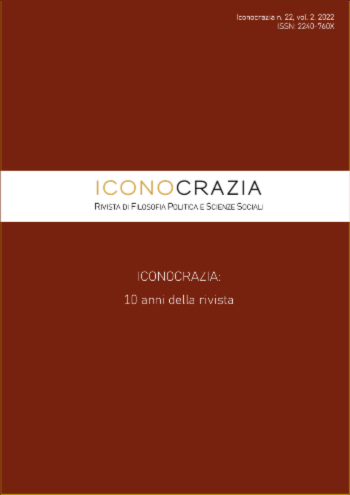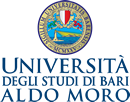Giorgio Vasari’s Vulcan’s Forge, Sala degli Elementi in the Palazzo Vecchio: the Symbolism of Fire
DOI:
https://doi.org/10.15162/2240-760X/1653Parole chiave:
Giorgio Vasari, camera picta, Florence art, history painting, 16th century artAbstract
The essay proposed here analyses Giorgio Vasari's works in the Sala degli Elementi in the Palazzo Vecchio in Florence. He succeeded in creating what is known in Latin as a camera picta, that is literally a painted room, in which classical imagery merges with the cultural currents of the 16th century. The study in this contribution also explores Vasari's definition of 'invenzione' (invention) and its role in the development of new decorative topos.Riferimenti bibliografici
Aakhus, P. (2008). Astral Magic in the Renaissance: Gems, Poetry, and Patronage of Lorenzo de’ Medici, Magic, Ritual, and Witchcraft, 3 (2), pp. 185-206.
https://doi.org/10.1353/mrw.0.0103.
Alpers, S. L. (1960). Ekphrasis and Aesthetic Attitudes in Vasari’s Lives, Journal of Warburg aid Courtauld Institute, 23 (3-4), pp. 190-215.
https://doi.org/10.2307/750591.
Arendt, H. (1978). The Life of the Mind, vol. 1-2, New York: Harcourt Brace Jovanovich.
Barocchi, P. (a cura di) (1960-1962). Trattati d’Arte del Cinquecento fra Manierismo e Controriforma, vol. 1-2-3, Bari: G. Laterza.
Bartoli C. (1567). I Ragionamenti accademici, Venice: F. Lorenzini da Turino.
Barzman, K. (1966-1967). The Florentine Accademia del Disegno: Liberal Education and the Renaissance Artist, in A. Baschloo (edited by), Academies of Art Between Renaissance and Romanticism, Leids
Kunsthistorisch Jaarboek, Leiden: Yearbook of Art.
Berti, L. (1967). Il Principe dello Studiolo: Francisco I, Florence: Edam.
Bjurström, P. (2001). Renaissance Drawings from Florence, Stockholm: National Museum of Art.
Bolzoni, L and Volterrani, S. (2008). Con parola brieve e con figura: Emblemi e imprese fra antico e modern, Pisa: Edizioni della Normale.
Bryce, J. (1983). Cosimo Bartoli (1503–1572), Geneva: Droz.
Carden, R. W. (1910). The Life of Giorgio Vasari, London: Philip Lee Warner.
Cascione, G., Guarino, G., and Mansueto, D. (2007). Images of the Body Politic, Milan: Ennerre.
Cascione, G., and Mansueto D. (2009). Iconocrazia: Imagini e potere nel Rinascimento europeo, Milan: Ennerre.
Cecchi, A. (2011). Bartoli, Borghini, e Vasari nei lavori di Palazzo
Vecchio, Cosimo Bartoli (1503–72), Florence: Olschki.
Chastel, A. (1975). Marsile Ficin et L’Art, Geneva: Droz.
Conticelli, V. (2007). Guardaroba di Cose Rare et Preziose: Lo Studiolo di Francesco I de’ Medici, Arte, Storia e Significati, Lugano: Agora
Publishing.
Collobi-Ragghianti, L. (1974). Il Libro dei Disegni del Vasari, Florence:
Vallecchi.
Cox-Rearick, J. (1984). Dynasty and Destiny in Medici Art: Pontormo, Leo X, and the Two Cosimos, Princeton, NJ: Princeton University
Press.
Crum, R. J. (1989). Cosmos, the World of Cosimo: The Iconography of the Uffizi Façade, The Art Bulletin, 71 (2), pp. 237-253.
https://doi.org/10.2307/3051196.
De Girolami Cheney, L. (2001). Giorgio Vasari’s and Niccolò Machiavelli’s Medicean Emblems of War and Peace in the Portrait of Duke Alessandro de Medici, in P. Cuneo, Artful Armies, Beautiful Battles, Leiden: Brill, pp. 107-131.
De Girolami Cheney, L. (2006). The Homes of Giorgio Vasari, London: Peter Lang Publishers.
Ead. (2007). Giorgio Vasari’s Teachers: Sacred and Profane Art, London/New York: Peter Lang.
Ead. (2009). Giorgio Vasari’s Sala degli Elementi: The Symbolism of Water, Discovery.
Ead. (2011). Giorgio Vasari’s Artistic and Emblematic Manifestations,
Washington, DC: New Academia Publishing.
Ead. (2012a). Giorgio Vasari’s Prefaces: Art and Theory, Oxford/New York: Peter Lang.
Ead. (2012b). Il Corridoio Vasariano: A Resplendent Passage to Medici and Vasari’s Grandeur, in P. Emmos, J. Hendrix and J. Lomholt (edited by), The Cultural Role of Architecture: Contemporary and Historical Perspectives, London: Routledge.
Ead. (2013). Giorgio Vasari: Artist, Designer, Collector, in D. J. Cast (edited by), The Ashgate Research Companion to Giorgio Vasari, Burlington, VT: Ashgate.
Ead. (2014). Giorgio Vasari’s ‘Sala degli Elementi’ in Palazzo Vecchio, Florence: The Symbolism of Saturn as Heavenly Air, in N. Campion (edited by), Heavenly Discourses, Bristol, UK: Sophia Centre Press, pp. 10-20.
Draper, J. L. (1973). Vasari’s Decoration in the Palazzo Vecchio: The
Ragionamenti Translation with and Introduction and Notes, University of North Carolina at Chapel Hill, PhD diss.
Ficino, M. (1959) [1576]. Opera Omnia, vol. 1-2, Turin: Bottega d’Erasmo.
Frey, K. (1923-1930). Der literarische Nachlass Giorgio Vasaris, vol. 1-2, Munich: George Müller.
Gabriele, M., Galassi, C. and Guerrini, R. (2013). L’Iconologia di Cesare Ripa: Fonti Letterarie e Figurative dall’Antichità al Rinascimento, Florence: Olschki.
Gahtan Wellington, M. (edited by) (2014). Giorgio Vasari and the Birth of the Museum, Burlington, VT: Ashgate.
Haskell, F. and Penny, N. (1981). Taste and the Antique, London: Yale University Press.
Hillard, C. (2013). Vasari and the Etruscan Manner, Sixteenth Century Journal, 44 (4), pp. 1021-1040.
Jackobs, F. (1986). Vasari’s Vision of the History of Painting: Frescoes in the Casa Vasari, Florence, Art Bulletin, 66 (3), pp. 399-416.
https://doi.org/10.2307/3050443.
Jacobi, J. (edited by) (1951). Paracelsus Selected Writings, Princeton: Princeton University Press.
Klein, R. and Zerner, H. (1966). Italian Art: 1500–1600, Englewood Cliffs, NJ: Prentice-Hall, Inc.
Kliemann, J. (1978). Zeichnugsfragmente aus der werkstatt Vasaris und ein unbekanntes programme Vincenzio Borghinis Invenzioni per Pitture Fatte, Jahrbuch der Berliner Museen.
Le Mollé, L. and Canfora, D. (edited by) (2007). Giorgio Vasari, Ragionamenti di Palazzo Vecchio, Paris: Les Belles Lettres.
le Mollé, R. (1995). Giorgio Vasari: L’homee des Médicis, Paris: Grasset.
Lensi Orlandi, G. (1978). Cosimo e Francesco de’ Medici alchimisti, Florence: Nardini.
Maffei, S. (2009). Le Radice Antiche dei Simboli: Studi sull’Iconologia di Cesare Ripa e i suoi Rapporti con L’Antico, Naples: La Stanza delle Scritture.
Maresca, P. (2012). Alchimia, magia e Astrologia nella Firenze dei Medici, Florence: Angeloa Pontecorboli.
Mazzucchelli, G. M. (1753-1760). Gli Scrittori d’ Italia, vol. 1-2, Brescia: Bossini.
Monbeig-Goguel, C. and Witzthum, W. (1968). Dessins inédits de Giorgio Vasari, Revue de l’Art 1
Monbeig-Goguel, C. (1972). Vasari et son temps:Inventaire général des dessins italiens/Musée du Louvre, Cabinet des Dessins 1, Paris: Editions des Musée Nationaux.
Moore, T. (1990). The Planets Within: The Astrological Psychology of Marsilio Ficino, Hudson, NY: Lindisfarne Press.
Muccini, U. (1990). Il Salone dei Cinquecento in Palazzo Vecchio, Florence: Sansoni.
Muccini, U. and Cecchi, A. (1991). The Apartments of Cosimo in Palazzo Vecchio, Florence: Le Lettere, 1991
Passignant, E. (2007). Vasari e i Ragionamenti in Palazzo Vecchio, Ricerche di Storia dell’Arte 91–92.
Ead. (2009). Cosimo I, Vasari, Palazzo Vecchio e la censura
ecclesiastica, Ricerche di Storia dell’Arte 98.
Praz, M. (1947-1968). Studies in Seventeenth Century Imagery, vol. 1-2, London/Rome: Phaidon.
Id. (2014). Studi sul concettismo: Emblema, Impresa, Epigramma, Concetto, Milan: Aesthetica.
Ripa, C. (1593). Iconologia overo descrittione dell’imagini universali cavate dall’antichita et da altri luoghi, Rome: Gio. Gigliotti.
Id. (1971) [1603]. Iconologia, Rome: Lapide Faeij
Rosenblum, R. (1957). The Origin of Painting: A Problem in the Iconography of Romantic Classicism, Art Bulletin, 39 (4), pp. 279-290.
https://doi.org/10.2307/3047729.
Rousseau, C. (1983). Cosimo I de’ Medici and Astrology: The Symbolism of Prophecy, Columbia University, PhD diss.
Rubin, P. L. (1995). Giorgio Vasari: Art and History, New Haven: Yale University Press.
Russell, D. (1981). Alciati’s Emblems in Renaissance France, Renaissance Quarterly, 34 (4), pp. 534-554. https://doi.org/10.2307/2861245.
Salaman, C.; van Oyen, D.; Wharton, W. D. and Mahe, J. (2004).
The Way of Hermes: New Translation of the Corpus Hermeticum and Definitions of Hermes Trismegistus to Asclepius, Rochester, VT: Inner
Traditions.
Schaefer, S. (1976). The Studiolo of Francesco I de’ Medici in the Palazzo Vecchio, Bryn Mawr College, PhD diss.
Schaer, R. (1993). Il Museo: Tempio della Memoria, Paris: Gallimard.
Scorza, R. (1981). Vincenzo Borghini and invenzione: The Florentine apparato of 1565, Journal of the Warburg and Courtauld Institute, 44, pp. 57-75.
https://doi.org/10.2307/751051.
Scott, W. (1992). Hermetica: The Writings Attributed to Hermes Trismegistus, Shaftesbury, Dorset, UK: Solos Press.
Scully, S. (2003). Reading the Shield of Achilles: Terror, Anger, Delight, Harvard Studies in Classical Philology, 101, pp. 29-47.
https://doi.org/10.2307/3658523.
Seznec, J. (1961). The Survival of the Pagan Gods, New York: Harper and Row, Publishers.
Slavenburg, J. (2012). The Hermetic Link: From the Secret Tradition to Modern Thought, Lake Worth, FL: Ibis Press
Stefani, C. (1990). Cesare Ripa: New biographical Evidence, Journal of the Warburg and Courtauld Institutes, 53, pp. 307-312.
https://doi.org/10.2307/751358.
Tinagli, P. (1985). Rileggendo i Ragionamenti, in G. C. Garfagnini (edited by), Giorgio Vasari: Tra decorazione ambientale e storiografia artistica, Florence: Olschki.
Ead. (2000). The Identity of the Prince: Cosimo de’ Medici, Giorgio Vasari and the Ragionamenti, in M. Rogers (edited by), Fashioning Identities in Renaissance Art, Aldershot, UK: Ashgate.
Ead. (2001). Claiming a Place in History: Giorgio Vasari’s Ragionamenti and the Primacy of the Medici, in Konrad Eisenbichler (edited by), The Cultural Politics of Duke Cosimo I de’ Medici, Aldershot, UK: Ashgate.
Varro, M. T. (47-44 b.C.), De Lingua Latina, in Intratext,
(http://www.intratext.com/X/LAT0231.HTM)
van Veen, H. T. (2006). Cosimo I de’ Medici and His SelfRepresentation in Florentine Art and Culture, New York: Cambridge University Press.
Vasari, G. (1550). Le Vite de’ piú eccellenti architetti, pittori, et scultori Italiani, da Cimabue insino a’ tempi nostri, Florence: Lorenzo Torrentino.
Id. (1568). Le Vite de’ piú eccellenti, pittori, architetti et scultori Italiani, da Cimabue insino a’ tempi nostri, Florence: Fillippo Giunti.
Id. (1970-1979). Le opere di Giorgio Vasari, Florence: Sansoni.
Id. (1971-1986). Le vite de’ più eccellenti architetti, pittori, et scultori, Florence: Sansoni.
Id. (1588). Ragionamenti del sig. Caualiere Giorgio Vasari … sopra le inuentioni da lui dipinte in Firenze nel Palazzo di loro Altezze Serenissime … Insieme con la inuentione della pittura da lui cominciata nella cupola, Florence: Filippo Giunti.
Waite, A. E. (1967). The Hermetic and Alchemical Writings of Paracelsus the Great, vol. 1-2, New Hyde Park, NY: University Books.
Wazbinski, Z. (1987). L’Accademia Medicea del Disegno a Firenze nel
Cinquecento, vol. 1-2, Florence: Olschki.
Wind, E. (1968). Pagan Mysteries in the Renaissance, New York: W. W. Norton & Company.
Voss, A. (edited by) (2006). Marsilio Ficino, Berkeley, CA: North Atlantic Books.







